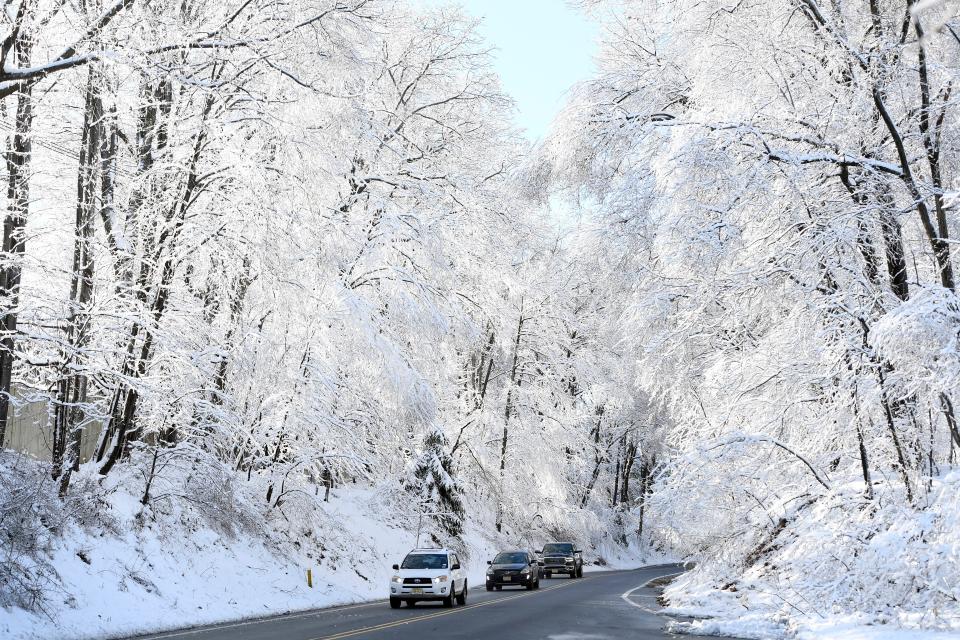This is what trees can teach us about New Year's resolutions | Opinion
We all know the annual drill: On Jan. 2 the gyms are packed, but by the time Feb. 2 comes around life is back to normal and gone are the days of going to the gym early in the morning or after work. We find millions of excuses why our New Year's resolutions barely lasted a month, and why the end-of-year inspiration to radically change our own lives for the better generally does not last more than a few weeks. Burnout creeps in, and a decline in motivation coupled with life’s everyday challenges wins the battle for our actions. We return to our daily grind.
Perhaps we can learn a lesson here from Jewish tradition, which celebrates Tu B’Shevat, a New Year-like tradition for trees, celebrated on the 15th of the Jewish month of Shevat — this year falling on Feb. 6 — which occurs annually while snow is generally on the ground.
Why would anyone celebrate trees and nature during the months when most branches lie barren?

Perhaps it is to teach us that small changes, especially at first, bring about a big difference. What if we view New Year's resolutions as long-term goals instead of the Jan. 2 implementation? Then maybe by the time Feb. 2 comes around, the momentum will grow instead of disappearing altogether.
The holiday celebrates a tree when outwardly it appears to be weakening, but beneath the soil, it is continuing to spread its roots. Despite a tree’s barren appearance, it has not stopped growing at all.
More perspective:Faith-based communities miss the mark when it comes to engaging young professionals
While its momentum may have slowed, and the change is not outwardly obvious, the tree must adapt to the environment it is in. The tree sheds its leaves to conserve resources, to combat the dehydration that can be caused by the season, to continue to exist throughout a tough period. Yet despite the stress caused by external factors, its roots continue to sluggishly develop, gradually growing in order to continue to provide the tree with stability, absorb nutrients, and develop the avenues for new branches and leaves that will soon emerge.
Soon, the days begin to lengthen and the temperature starts incrementally to get warmer, and suddenly the tree’s momentum increases. The climate creates an external reality in which it is easier for the tree once again to flourish. The warmer temperatures and increased sunlight accelerate the tree's metabolic processes, which in turn cause the sap to start flowing, transporting water and nutrients from the roots to the branches and eventually to the leaves. By the time spring comes around, the tree is in full bloom. It is grander, taller and greener than it has ever been before.
Now just imagine if we could replicate that trajectory in our own lives. Think about the monumental change we would see in a year if instead of spending two hours in the gym on Jan. 2, we spent 20 minutes, then 30, eventually climbing to whatever our goals are. Imagine if we built up instead of cycled downward, and how we could essentially reverse the cycle of exhaustion around personal change.
You do not need to take my word for it. This concept of gradual self-improvement and its capacity to generate monumental transformations is very well established in literature and practice and has been around for centuries. It goes by over a dozen different names depending on the culture and source, including the “theory of gradual improvement,” “the Kaizen” method and “marginal gains,” to name just a few.
February has just come around, and as the energy behind our New Year’s resolutions is starting to slow, maintaining our perseverance and determination becomes increasingly challenging. It's all the more frustrating when those major changes we made last month have yielded what we can see in the mirror as only minor returns on investment. Even more so for the small incremental changes we made that, while they will lead to major results, have not yet gotten to the point.
Like the tree, whose roots are growing during the barren winter, so are the roots of our habitual change. Celebrating the New Year for trees during the dead of winter may be a Jewish tradition, but the message to persevere and continue growing, even during the darkest of days, is something we can all take to heart.
A fitness enthusiast, Rabbi Benny Berlin is the rabbi of the BACH Jewish Center in Long Beach, New York.

This article originally appeared on NorthJersey.com: Tu B’Shevat: What trees can teach us about New Year's resolutions

